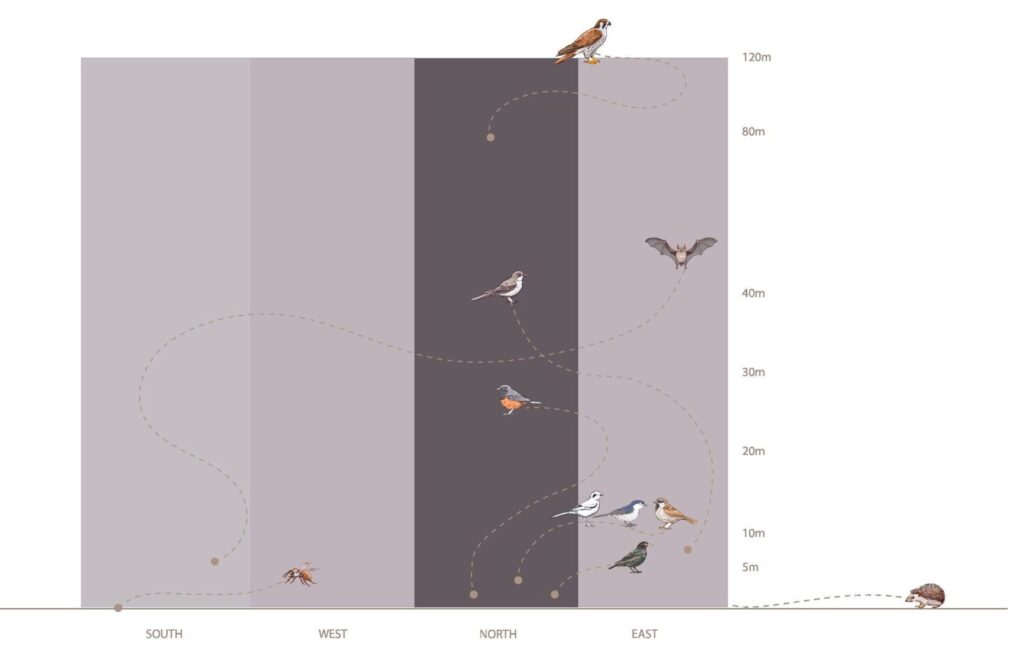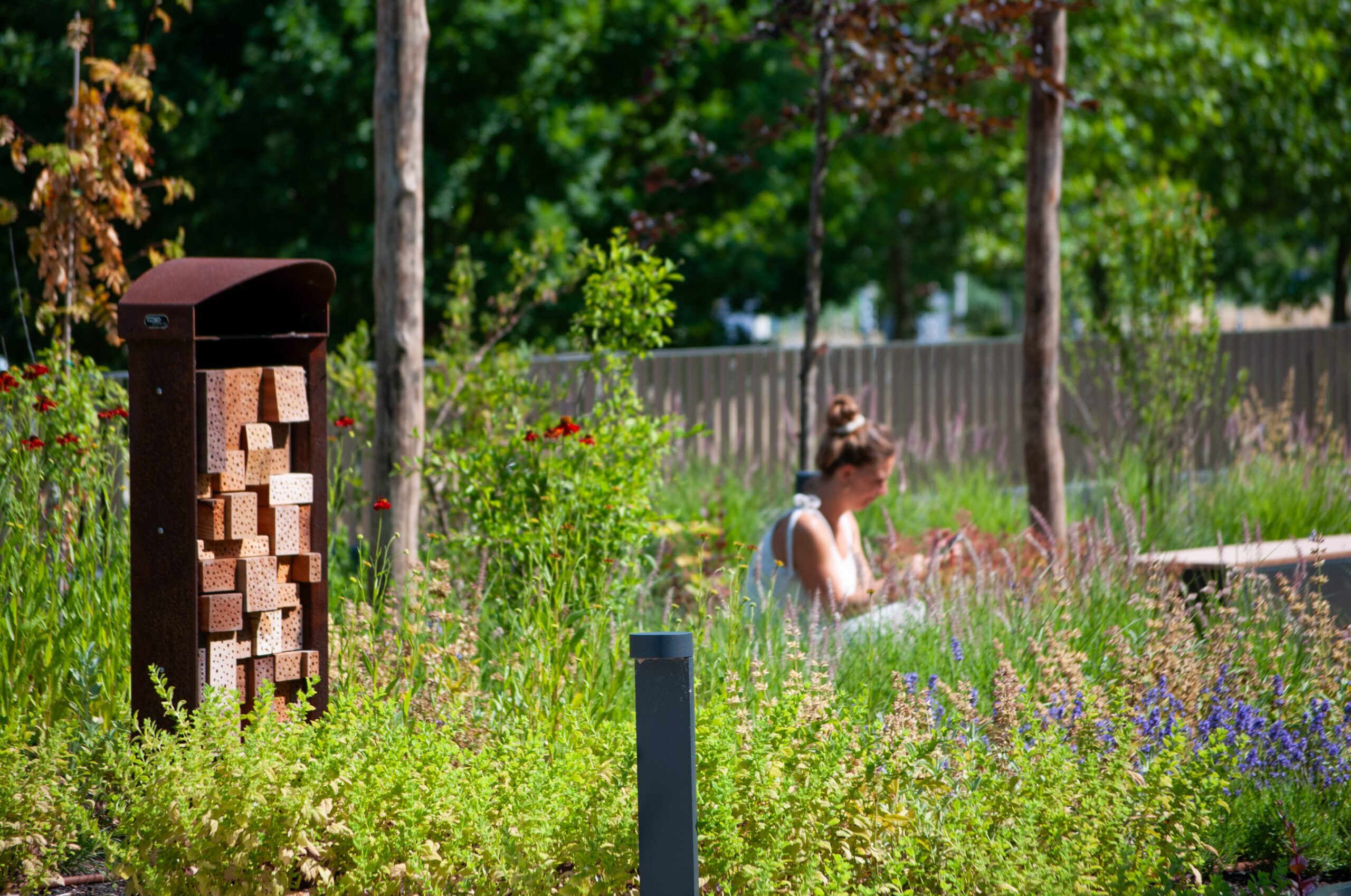

29 Jul Meet the Neighbours: Stories of Our Urban Wildlife and Biodiversity
Have you ever wondered whose voice wakes you up in the morning? Maybe it’s the cheerful gossip of sparrows outside your window, the swooshing flight of swifts overhead, or the silent guardian of the night keeping mosquitoes away. We often think of cities as purely human habitats – full of concrete, glass, and steel – but if you pause and listen, you’ll realise we share these streets, rooftops, and gardens with a vibrant community of wild neighbours
What is a nature-inclusive city?
A nature-inclusive city is an urban environment where humans and wildlife coexist. It is designed to welcome animals and plants by integrating habitats into buildings, streetscapes, and public spaces. Why is this important? Because cities become more resilient, healthier, and more beautiful when nature thrives alongside us.
We see their familiar faces every day – flocks swirling through the sky, small silhouettes perched on rooftops, or quiet rustles in gardens – yet we know surprisingly little about them. Who are they? Where did they come from? What is their family history? How to get along with them?
Let’s Meet the Neighbours
House Sparrow (Passer domesticus)
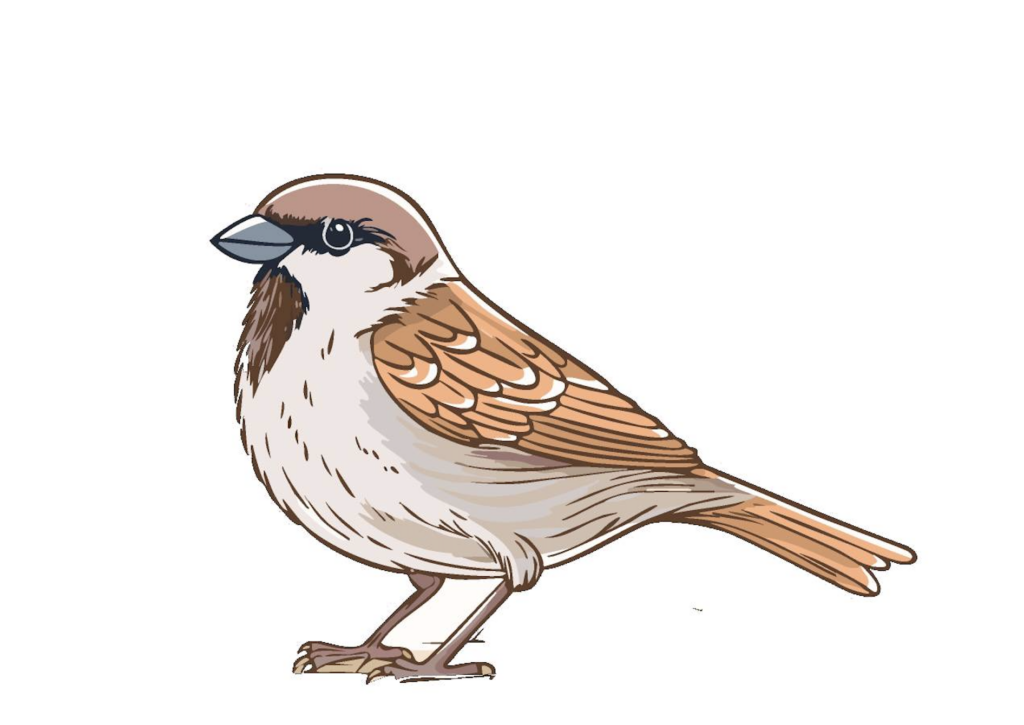

Story: The sparrow is your classic friendly neighbour who always hosts the best BBQs. Originally nesting in tree holes in warm open landscapes, they moved in with us thousands of years ago, attracted by our farms, crumbs, and warm nooks. Now, they live rent-free in roof eaves, chattering all day long.
Fun fact: They are true city gossipers – males chirp constantly to defend their territory and impress females.
How to get along: House sparrows prefer living close together in colonies, just like apartment dwellers. To support them, place multiple nest boxes together – at least two, but preferably more – as they are colonial breeders. Install the boxes at a height of 3 to 10 metres, near roof gutters or facades, and away from windows. The entrance hole should be 32 mm in diameter, with an inner size of at least 12.5 by 12.5 cm, and maintain a spacing of at least 50 cm between each box. Position them facing north, east, or northeast to avoid excessive sun or rain. Planting species such as hawthorn (Crataegus monogyna), firethorn (Pyracantha coccinea), and elderberry (Sambucus nigra) nearby will provide insects, seeds, and berries that sparrows love to feed on.
Common Swift (Apus apus)
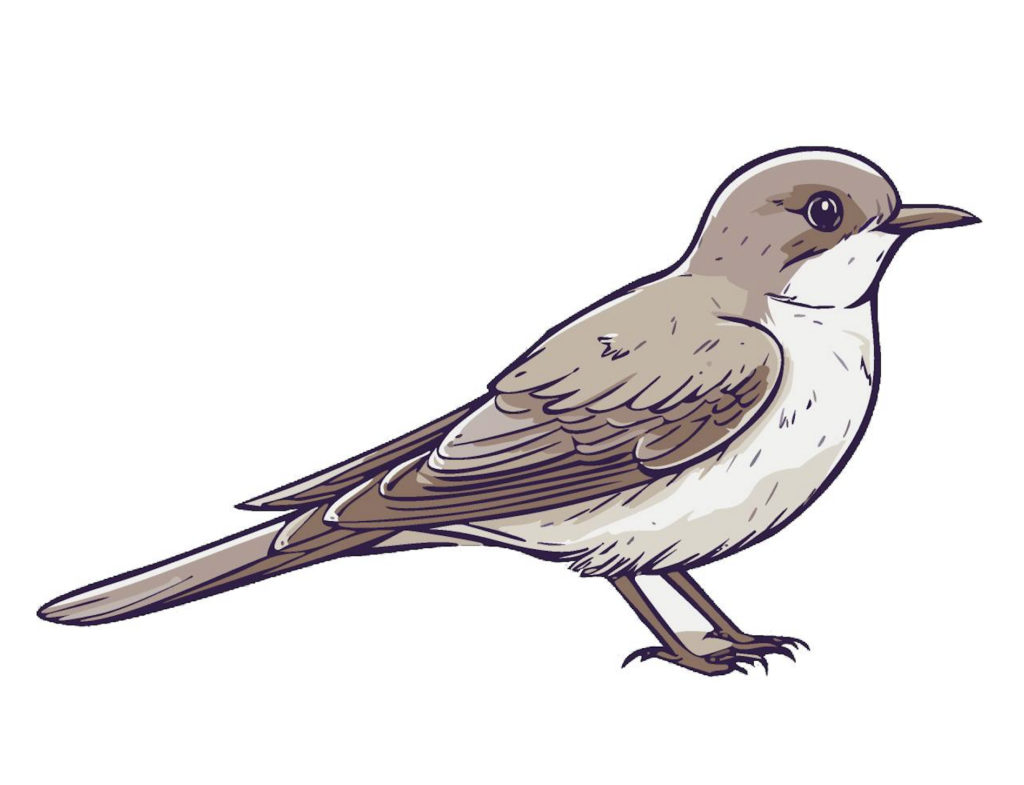

Story: Swifts are the digital nomads of the bird world – always on the move, rarely touching ground. They used to nest on cliffs across Europe but today, city buildings with high nesting sites mimic their natural homes. Swifts spend nearly their entire lives flying, eating, and even sleeping mid-air.
Fun fact: A swift can stay airborne for up to 10 months without landing. Imagine never having to come down for a coffee break.
How to get along: To support common swifts, integrate swift bricks high on buildings to provide them with safe nesting sites. Install these nest boxes in clusters of 5 to 20 units at heights between 6 and 40 metres, with higher placements preferred. Position them facing north, east, or northeast, ensuring a free flight path of at least 3 metres below and in front of the entrance, as swifts drop several metres before rising in flight. Each nest box should measure approximately 25 cm wide, 13 cm high, and 15 cm deep, with a 35 x 70 mm entrance slit. Additionally, maintaining wildflower-rich grasslands within 500 metres, with plants such as red clover (Trifolium pratense) and knapweed (Centaurea nigra), will help attract the aerial insects that swifts rely on for food.
House Martin (Delichon urbicum)
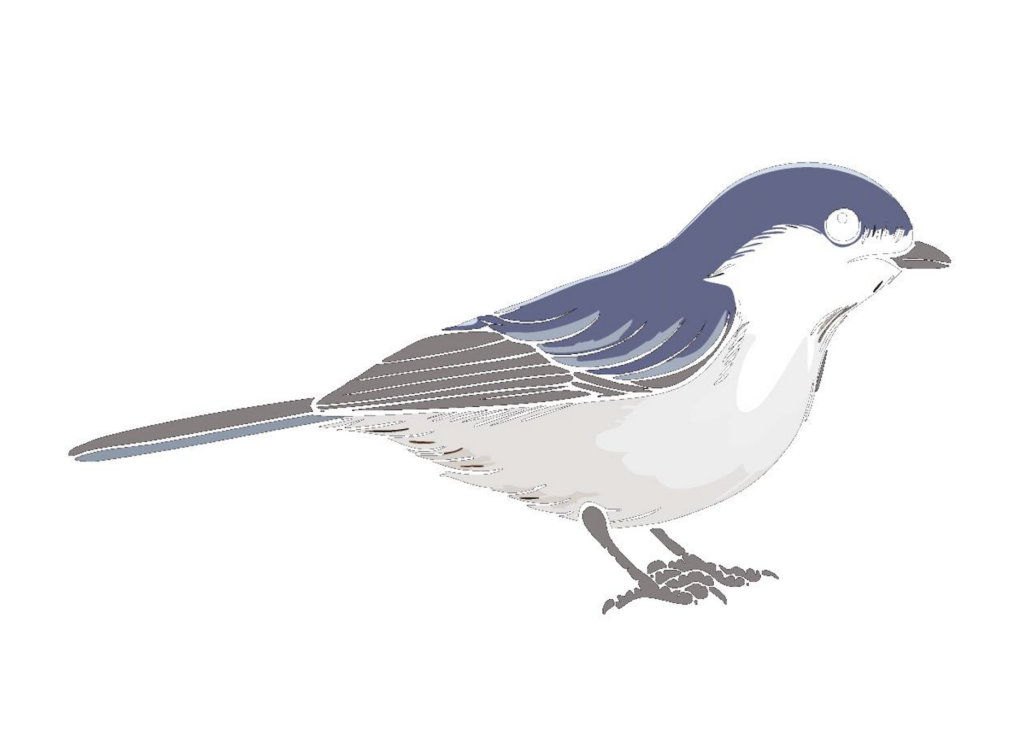

Story: The cheerful house martin is the mud-architect of the city. Before urban life, they built mud nests on cliffs near rivers. Now, they nest under our roof overhangs in tidy rows like a mini terraced neighbourhood. You’ll see them flying back and forth with tiny beakfuls of mud, building their dream homes.
Fun fact: Their nests are often re-used every year by the same pair, like family summer homes.
How to get along: To support house martins, place artificial nests on exterior walls under an overhang. Install these nests at heights between 4 and 10 metres, preferably facing northeast to provide optimal shelter and conditions. House martins are colony nesters, so place at least five nests together per building to encourage successful breeding. Enhance their food supply by incorporating wetland-adjacent plantings nearby, such as meadowsweet (Filipendula ulmaria) and marsh marigold (Caltha palustris), which attract the flying insects they depend on.
Black Redstart (Phoenicurus ochruros)
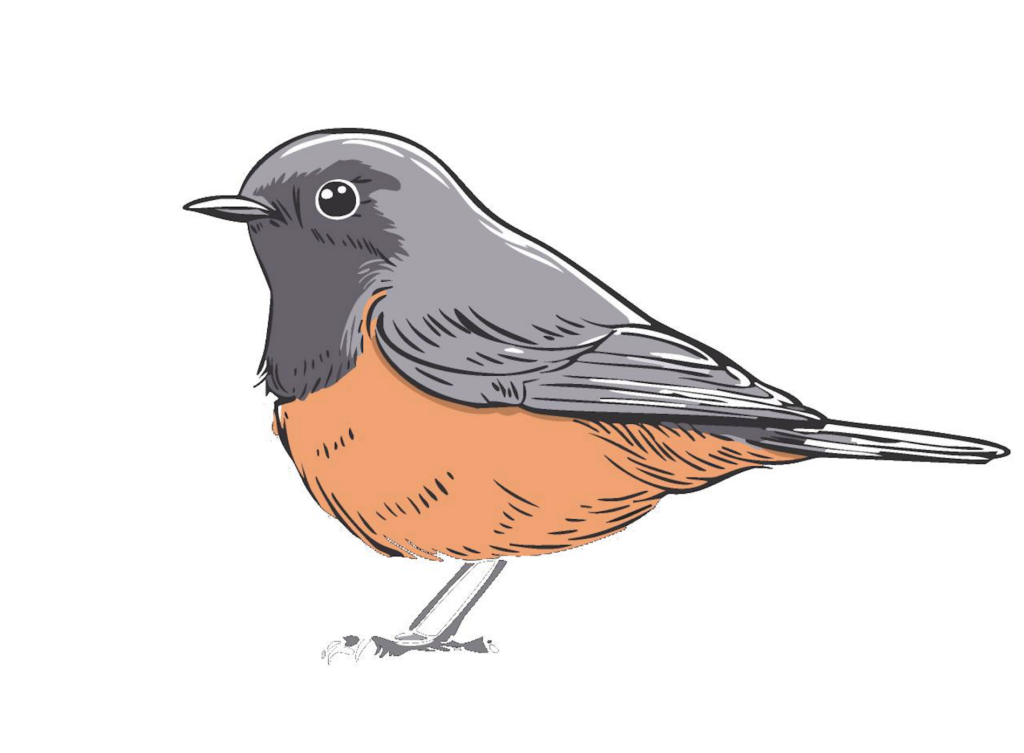

Story: The black redstart is an urban rockstar with a raspy voice, preferring gritty industrial areas and quiet corners of the city to sing its songs. Originally cliff dwellers from mountainous areas, they now perch on flat roofs, concrete ledges, and steel beams, their tails flicking like rebellious guitarists.
Fun fact: Their call sounds like a squeaky hinge – fitting for their industrial-chic lifestyle.
How to get along: To support black redstarts, maintain gravel roofs or rocky garden edges to mimic their natural cliff habitats. Install nest boxes measuring 19 x 18 x 18 cm with an opening of 16 x 6 cm, placed singly or in pairs. Position the boxes at a minimum height of 2 metres, preferably higher near the roof to give them a good prospect over their territory, with a maximum of two boxes per project. Orient them towards the north, east, or northeast to provide shelter from prevailing weather. Additionally, plant sparse, sunny vegetation with gravel or stone substrates, including flowering species such as thyme (Thymus serpyllum) and yarrow (Achillea millefolium), to attract the insects they feed on.
Starling (Sturnus vulgaris)
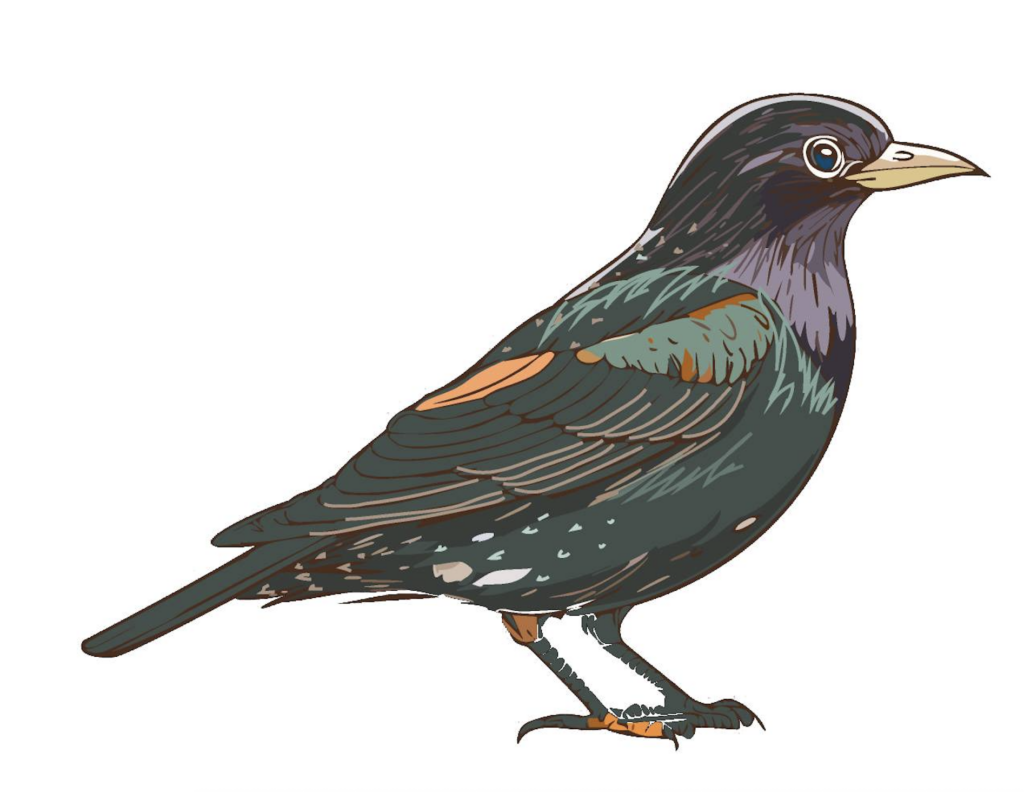

Story: Starlings are the life of the party – shimmering feathers, loud chatter, and expert impersonations. Originally woodland dwellers, they now nest in building cavities and gather in large flocks to perform aerial dances called murmurations before roosting in urban trees.
Fun fact: They can mimic sounds like car alarms, ringtones, and other birds.
How to get along: To welcome starlings, install nest boxes measuring 30 cm high, 16 cm long, and 16 cm deep, with a 45 mm entrance hole. Place them in clusters of at least five boxes to support their social nesting behaviour. Position the boxes at heights between 2 and 5 metres, oriented towards the north, east, or northeast to provide shelter from direct sun and rain. While starlings primarily feed on insects, planting berry-producing shrubs such as elderberry (Sambucus nigra) and rowan (Sorbus aucuparia) nearby will offer them an additional food source throughout the seasons.
White Wagtail (Motacilla alba)
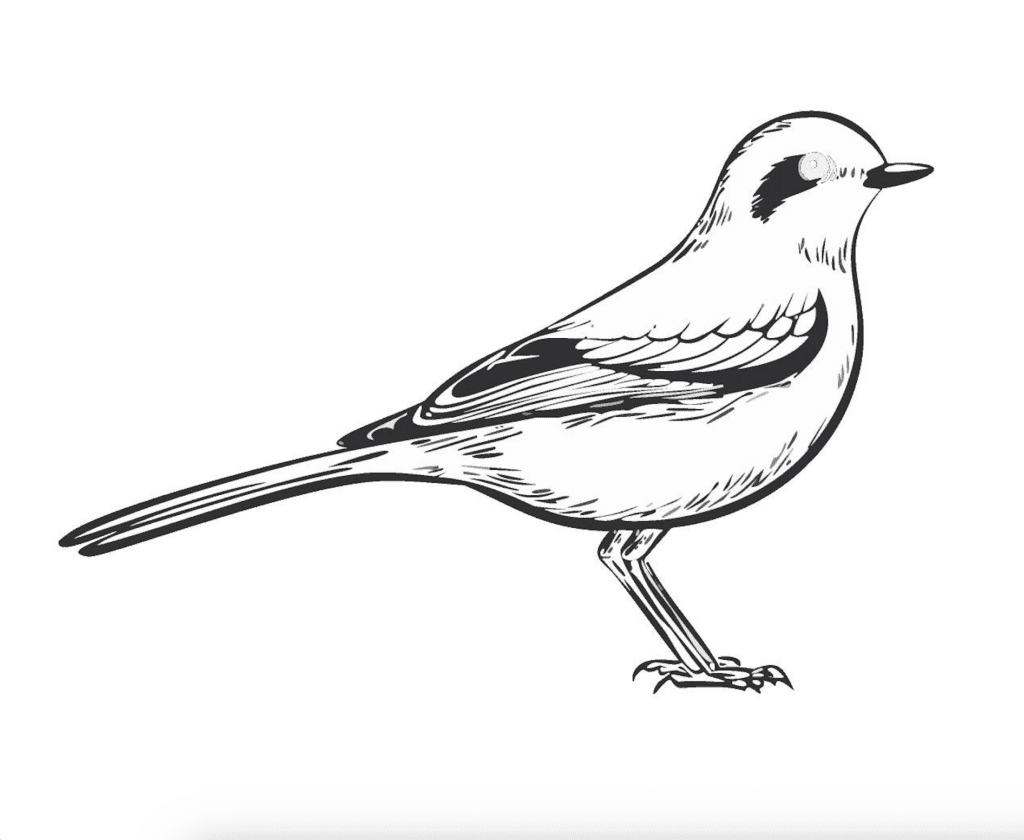

Story: The white wagtail is the urban fitness instructor, constantly bobbing its tail as if warming up for another workout. They once lived along rivers and meadows, but have adapted to paved city squares, car parks, and flat roofs where insects gather.
Fun fact: Their tail wagging helps flush out insects from the ground.
How to get along: To support white wagtails, maintain quiet corners with low vegetation or scattered stones where they can forage for insects. Provide nest sites such as open ledges or nest boxes with an open front, measuring 19 x 18 x 18 cm. Install these at heights between 3 and 10 metres, oriented towards the north or east to protect them from direct sun and prevailing winds. Additionally, create short grass areas with abundant insect life by planting species such as plantains (Plantago major) and dandelions (Taraxacum officinale), which will provide them with a reliable food source.
Peregrine Falcon (Falco peregrinus)
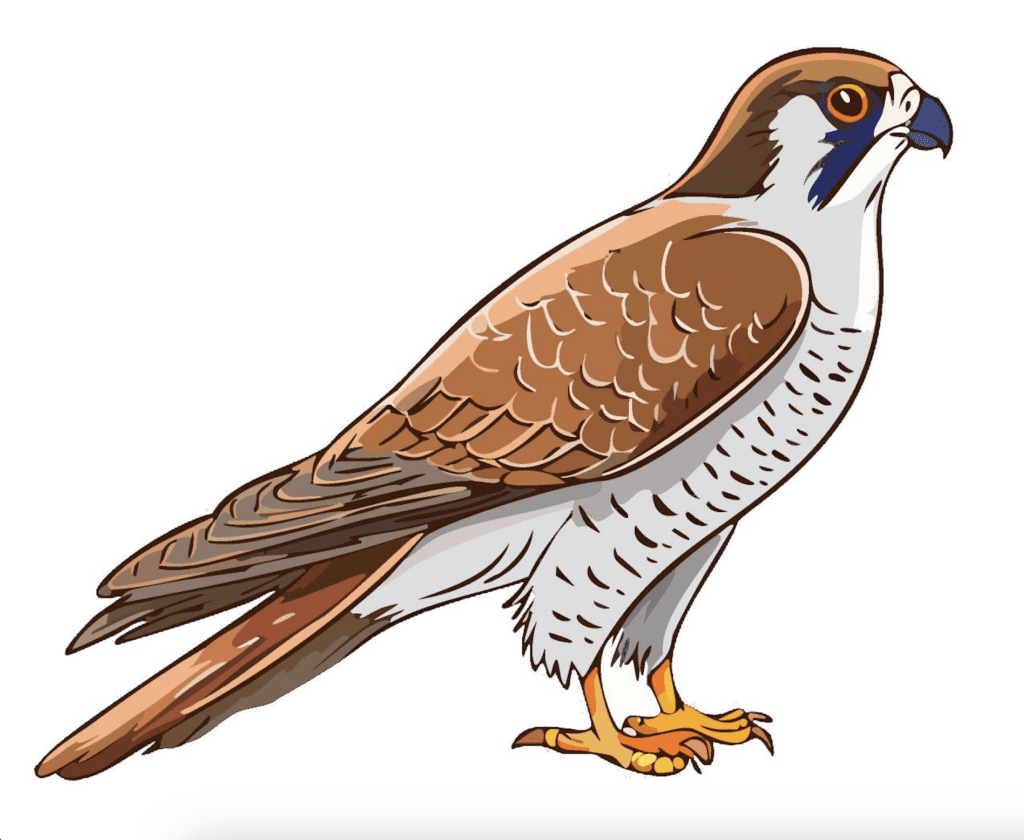

Story: The peregrine falcon is the urban rooftop executive – fierce, elegant, and with the best penthouse view in the city. Historically nesting on high cliffs, they now thrive on tall buildings and bridges, using their aerial speed (up to 320 km/h) to hunt pigeons and starlings.
Fun fact: They are the fastest animals on earth, reaching speeds of a Formula 1 car in a dive.
How to get along: To support peregrine falcons, install nest ledges or boxes on skyscrapers, towers, or high industrial structures. Use large open gravel trays with a metal front, measuring 80 cm long, 62 cm high, and 64 cm deep, to mimic their natural cliff ledges. Place these nest boxes at heights of at least 25 metres, with ideal placements between 80 and 120 metres to provide the high vantage points they prefer. Due to their territorial nature, install a maximum of one nest site per neighbourhood. Additionally, ensure there are open landscapes nearby for hunting, as peregrine falcons rely on clear flight paths to catch their prey.
Common Pipistrelle Bat (Pipistrellus pipistrellus)
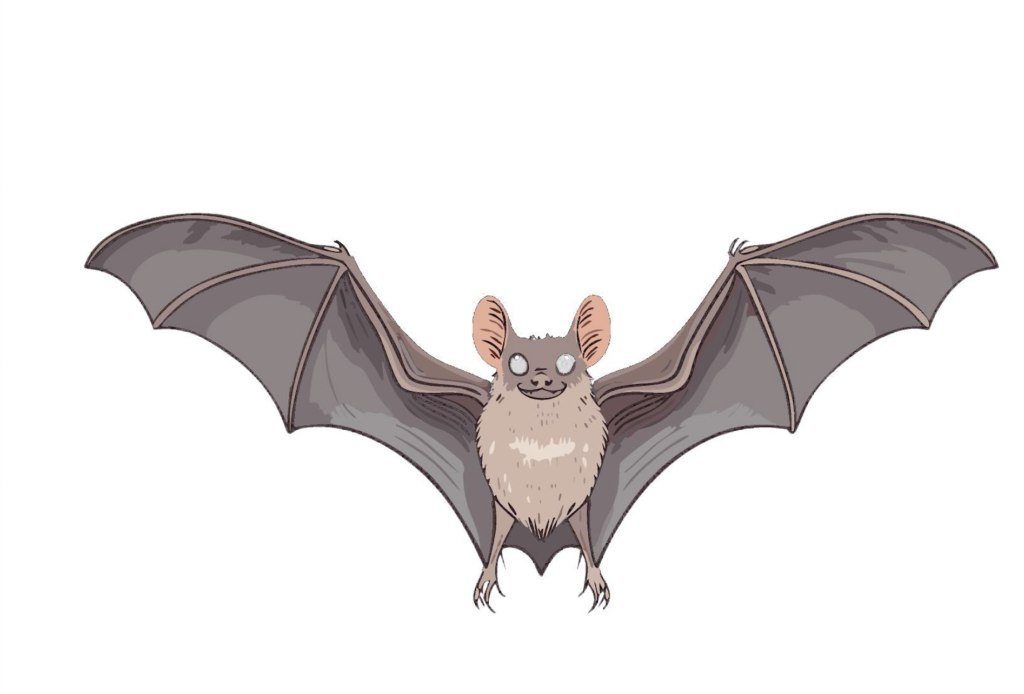

Story: The pipistrelle bat is the quiet, nocturnal neighbour who keeps the mosquito population under control. Originally roosting under tree bark and in hollow trunks, they now thrive behind cladding, under roof tiles, and in bat bricks.
Fun fact: One pipistrelle can eat up to 3,000 insects in one night. Better than any bug spray.
How to get along: Integrate bat boxes or bricks into building facades for roosting, placing them between 4 and 50 meters high and at least 1 meter away from windows. Position roosts in different wind directions and create multiple locations with varied indoor climates to accommodate bats’ preferences, especially during the maternity period from mid-May to early August when females seek warmer spots. Entrances should be 16–20 mm high for smaller species, with a landing board or rough surface at least 30 cm high for easy access. For other species, consult specialists to replicate natural openings. Surround the area with insect-attracting plants, especially night-blooming flowers like evening primrose (Oenothera biennis) and honeysuckle (Lonicera periclymenum).
Hedgehog (Erinaceus europaeus)
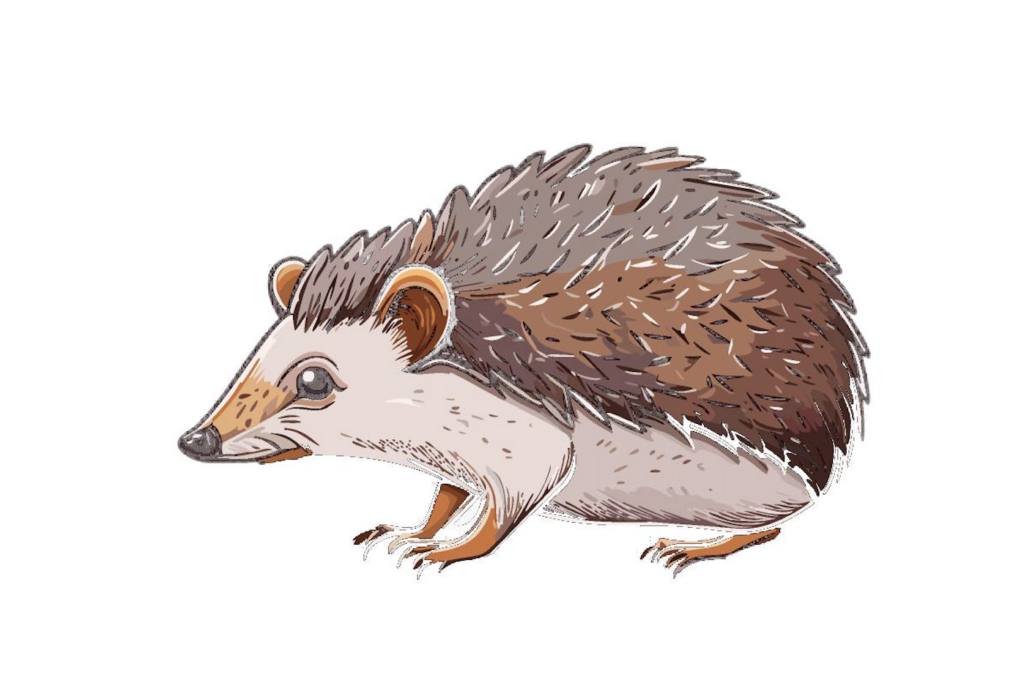

Story: Hedgehogs are the quiet garden wanderers, like that neighbour who only comes out for late evening walks. They lived in woodlands and hedgerows but now roam urban gardens in search of beetles, slugs, and worms, snuffling under leaves and bushes.
Fun fact: They can travel up to 2 km in one night looking for food.
How to get along: To support hedgehogs, create “hedgehog highways” by making 15 x 15 cm openings at the bottoms of fences to allow them free movement between gardens and green spaces. Provide nesting opportunities with log piles, compost heaps, and dense shrubs where they can find shelter and hibernate during winter. Hedgehogs thrive in gardens, forest edges, and thickets, so planting native hedgerows such as hawthorn (Crataegus monogyna) and hazel (Corylus avellana), along with ground-cover perennials, will offer them food, shelter, and safe pathways throughout their nightly foraging routes.
Red Mason Bee (Osmia bicornis)


Story: The red mason bee is the friendly solo entrepreneur of the insect world. Originally nesting in hollow stems and beetle holes, they now thrive in bee hotels. They are gentle and hardworking, pollinating flowers far more efficiently than honeybees.
Fun fact: Females seal their eggs in mud-lined chambers, like tiny apartments for their future children.
How to get along: To create an ideal habitat for bees, install bee hotels in sunny, sheltered spots with holes or tubes measuring 1 to 9 mm in diameter. The minimum dimensions of the bee hotel should be 21 cm high, 10 cm long, and 6 cm deep. Position the hotel facing south, southwest, or west, ensuring it is dry and protected from the wind. Surround the area with high-nectar and pollen-producing plants, focusing on early-flowering native species such as willow (Salix spp.), fruit trees like apple (Malus domestica), and cowslip (Primula veris) to provide essential food sources for the bees.
Conclusion
Cities are not just human habitats – they’re ecosystems, alive with neighbours who adapt, evolve, and enrich our lives in unseen ways. Next time you hear that morning chorus or spot a shadow swooping past your window, remember: it’s your neighbour, just saying hello.
*Source: Synchroon, Nest Natuurinclusief, & Vogelbescherming Nederland. (2023). Natuurinclusief ontwikkelen.
